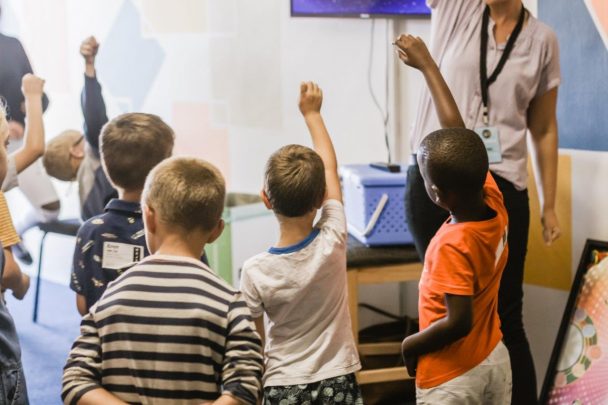Description
Targeted to B1 speakers or above. Read more »
At the B1 CEFR level, learners comprehend the main points of clear texts on familiar subjects and handle most situations while traveling. They can produce simple connected texts, expressing experiences, opinions, and plans in a concise manner.
This course is designed for teachers in primary school who want to learn how to create content-based learning lessons and implement them in their classes.
The focus will be on selecting an appropriate topic, sourcing and creating content, and adapting the foreign language didactic materials to different age groups and language levels.
Teachers will use the content and new methodologies to enhance motivation and boost self-confidence in their classrooms.
Through work-alone or group activities, simulations, and role-plays, participants will experience firsthand how CLIL (Content and Language Integrated Learning) promotes interdisciplinary learning, adding a real-world dimension to a course topic while contextualizing language learning.
Topics will include sourcing and choosing content, scaffolding content and language learning, adapting the content to students’ needs and abilities, evaluation strategies, and many ideas for implementing CLIL in the primary classroom.
Classroom management strategy and support will also be addressed as they relate to this innovative and increasingly popular methodology that engages both teachers and students.
At the end of the course, participants will return to their schools with a suitcase full of enthusiasm, ideas, strategies, and activities to integrate into their course curricula for successful and effective CLIL lessons with their primary students.
The course will address both the needs of native speakers faced with teaching CLIL lessons as well as the challenges faced by non-native speakers.
Suggested English Proficiency Level: INTERMEDIATE
What is included
Learning outcomes
Participants will learn to:
- Produce successful and effective CLIL lessons for their primary students;
- Teach an academic topic in a foreign language;
- Adapt and simplify existing academic material for use in a foreign language;
- Plan stimulating activities that impact the learning of both content and language;
- Set students at ease by creating an inclusive, fun, and relaxed classroom environment;
- Engage students in communicative activities appropriate to their level.
Tentative schedule
Day 1 – Course introduction & setting goals
- Introduction to the course, the school, and the external week activities;
- Icebreaker activities using drama for trust and ensemble building;
- Identification of needs and goals for each participant and relevant populations;
- Presentations of the participants’ schools.
Day 2 – Using CLIL in a primary classroom
- CLIL in the primary classroom: selecting an appropriate subject and topic;
- Sourcing and choosing content and materials;
- Break;
- Adapting foreign language didactic materials to a primary class; age considerations;
- Adapting academic topics for primary-aged non-native speakers.
Day 3 – Adapting content to age groups
- Scaffolding content and language learning for different age groups and language levels;
- Break;
- Activity planning;
- Resources and aids in the preparation of lessons.
Day 4 – Analysing case studies
- Case studies;
- Break;
- Evaluation strategies;
- Implementing CLIL in the primary classroom: the four skills;
- Break;
- Group project.
Day 5 – Presentations
- Presentation of participants’ projects.
Day 6 – Course closure & cultural activities
- Course evaluation: round-up of acquired competencies, feedback, and discussion;
- Awarding of the course Certificate of Attendance;
- Excursion and other external cultural activities.







